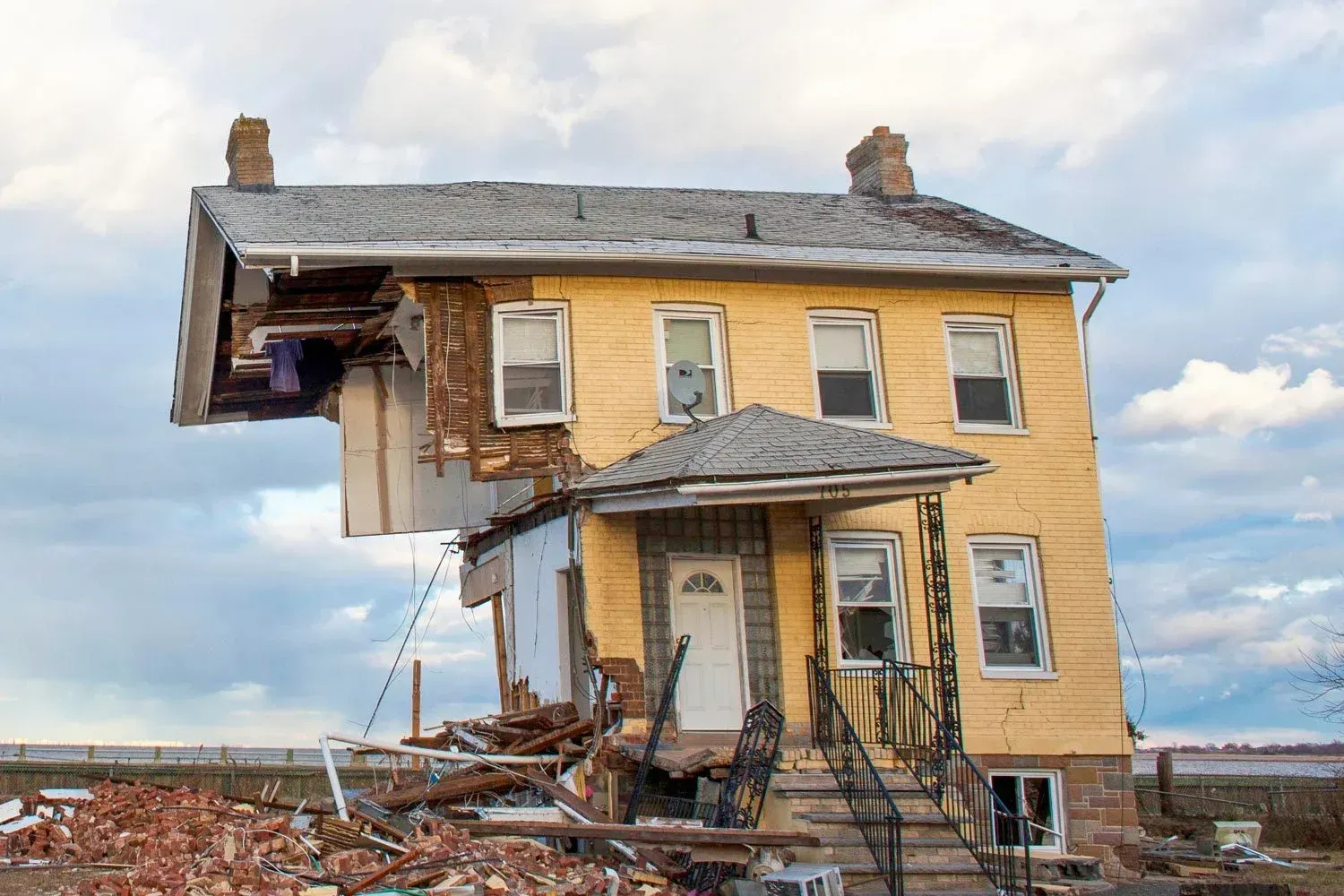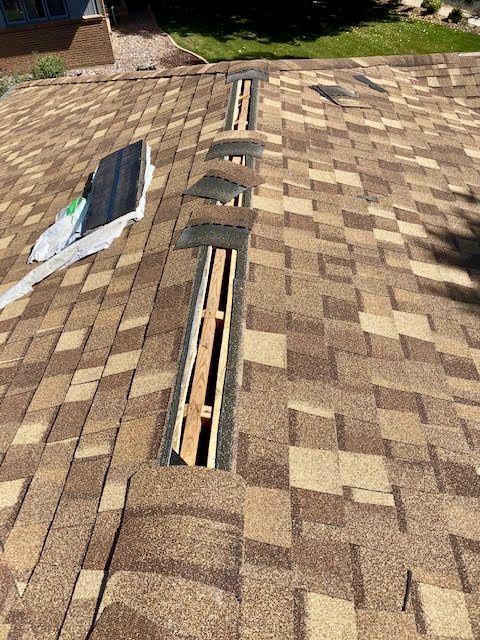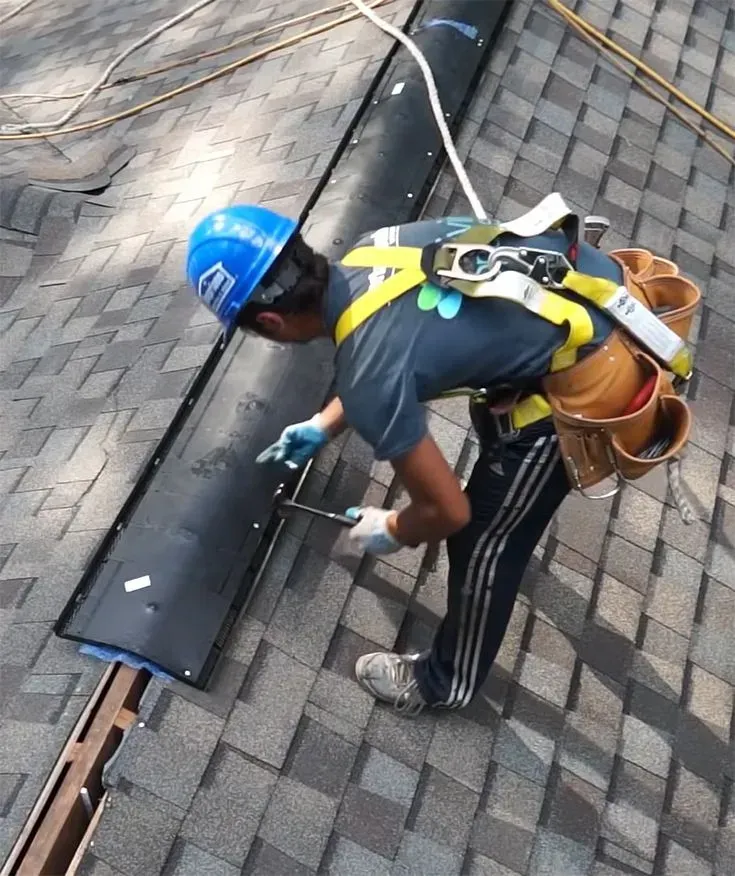Hurricane-Resistant Roof Installation
Protecting your home from extreme weather is more important than ever, especially in the Washington DC area where we experience everything from summer storms to winter blizzards. We specialize in hurricane-resistant roof installations that stand up to nature's worst. Our hurricane-grade polyethylene tarps and specialized installation methods are specifically designed to withstand high winds, heavy rain, and flying debris that often damage standard roofs during severe weather events.
We understand that your roof is your home's first line of defense. That's why we use only high-quality materials that resist wind, hail, and UV damage - perfect for DC's challenging climate of hot summers and cold winters. Our OSHA-trained technicians bring decades of experience to every installation, ensuring your roof not only looks great but provides lasting protection for your family and belongings.
When you choose our hurricane-resistant roofing services, you're not just getting a roof - you're investing in peace of mind. You won't have to worry about emergency leaks or structural damage during the next big storm. We serve homeowners throughout the Washington DC area with the expertise and attention to detail your home deserves.

Understanding Hurricane-Resistant Roofing
These systems are engineered to withstand high winds, heavy rain, and flying debris that can cause catastrophic damage during storms.
Material Durability
When installing hurricane-resistant roofing, we prioritize materials that can endure extreme weather conditions. Our high-quality asphalt shingles are rated to resist winds up to 130 mph, significantly higher than standard roofing materials. These specialized shingles feature reinforced nailing areas and stronger adhesives that prevent uplift during intense storms.
We also offer metal roofing options with interlocking panels that create a nearly impenetrable barrier against wind and rain. These panels are coated with protective layers that resist corrosion from saltwater exposure - a common concern in coastal regions.
Hurricane-grade polyethylene materials used in our emergency tarping services demonstrate the durability needed in storm-prone areas. These materials represent the same technology we incorporate into permanent roofing solutions for long-term protection.


Structural Requirements
Hurricane-resistant roofing requires more than just durable materials - proper structural support is essential. We begin each installation by evaluating your roof deck integrity and reinforcing it where necessary. A solid foundation prevents catastrophic failures during high winds.
Roof shape impacts hurricane resistance. Hip roofs perform better than gable designs because they offer less wind resistance and fewer vulnerable points. We can recommend design modifications that improve your home's resilience.
Proper fastening techniques are critical. We use ring-shank nails or specialized screws that provide up to 100% more holding power than standard fasteners. Our team follows precise spacing patterns that exceed building code requirements for high-wind zones.
Hurricane straps and clips create continuous load paths from your roof to your foundation, distributing wind forces throughout the structure rather than concentrating them at weak points.
Impact Resistance
During hurricanes, flying debris poses one of the greatest threats to roof integrity. Our impact-resistant roofing materials are tested to withstand strikes from objects propelled at high speeds without puncturing or cracking.
We install Class 4 impact-resistant shingles that have passed UL 2218 testing - the highest rating available. These shingles contain special polymers and reinforced fiberglass that absorb impact energy without breaking.
For maximum protection, we recommend considering specialized underlayment systems. These act as a secondary water barrier if the primary roofing material becomes damaged. Our hurricane-grade underlayment can remain watertight even when exposed to rain for up to six months.
Proper flashing installation around roof penetrations prevents water intrusion at vulnerable points. We use heavy-gauge metal flashing and waterproof sealants designed specifically for extreme weather conditions.

Roof Installation Process
Our hurricane-resistant roof installation follows a structured approach to ensure your home stays protected during severe weather events.
1. Initial Assessment
Our team begins with a thorough evaluation of your current roof structure. We inspect for existing damage, weak points, and structural concerns that might compromise a new installation. We measure your roof's dimensions precisely and check the decking condition underneath. This helps us identify any repairs needed before installation begins.
2. Customized Roof Design
Based on our assessment, we develop a tailored roof design that addresses your specific hurricane resistance needs. Our designs incorporate wind-rated materials tested to withstand speeds of 130+ mph.
3. Professional Installation Techniques
Our OSHA-trained technicians apply specialized hurricane-resistant installation methods. We use upgraded fasteners with greater pullout resistance and properly spaced according to wind zone requirements. We install drip edges with additional fasteners and seal them with roof cement. This prevents wind from getting underneath the roofing material and causing uplift.
4. Regular Inspections
We recommend scheduling professional roof inspections at least twice a year—ideally in spring and fall. These regular check-ups help identify potential weaknesses before they become major problems. Our experienced technicians look for loose shingles, damaged flashing, and signs of water intrusion that could compromise your roof during severe weather.
Roof Replacement and Retrofitting
Assessing Existing Structures
Before beginning any hurricane-resistant roof project, we conduct a thorough assessment of your current roof structure. Our team examines the roof deck, support system, and existing materials to identify weak points that could fail during severe weather.
We look for signs of previous water damage, inadequate fastening systems, and aging materials that may compromise your roof's integrity. This assessment includes:
- Inspection of attic ventilation systems
- Evaluation of roof-to-wall connections
- Measurement of deck thickness and quality
- Analysis of existing fastener patterns and types
Our experts use this information to create a customized plan that addresses your home's specific vulnerabilities. We'll explain what we find in clear, simple terms so you understand exactly what needs attention.
Upgrading to Hurricane Standards
Upgrading your roof to meet hurricane standards involves several key improvements that work together to create a stronger system. We follow the latest building codes for high-wind areas and often exceed minimum requirements.
The foundation of a hurricane-resistant roof starts with proper decking. We use thicker plywood or OSB panels and closer nail spacing to prevent deck failure. Our team installs:
- Ring-shank nails instead of standard smooth nails
- Hurricane straps and clips to strengthen roof-to-wall connections
- Enhanced water barriers under roofing materials
- Impact-resistant shingles rated for high winds
We pay special attention to edges and ridges where wind forces are strongest. Our installation methods create a continuous load path from your roof to your home's foundation, dramatically improving wind resistance.
Retrofitting Techniques
If a complete roof replacement isn't needed, we offer targeted retrofitting techniques to strengthen your existing roof against hurricanes. These cost-effective improvements can significantly boost your roof's wind resistance. Our most common retrofitting services include:
- Secondary water barriers - Adding peel-and-stick membranes over your entire deck
- Improved fastening - Reinforcing existing connections with additional hardware
- Ridge strengthening - Installing specialized braces at vulnerable points
- Gable end reinforcement - Adding bracing to prevent collapse of end walls
For homes with older roof designs, we can install hurricane braces in your attic to strengthen the connection between roof trusses and walls. We also recommend sealing all roof deck seams to prevent water intrusion if shingles blow away. These targeted improvements can make your existing roof significantly more resistant to storm damage at a fraction of replacement cost.
FAQs
TPO roofing installations come with many common questions from our customers. We've gathered the most important information about costs, durability, brands, and maintenance to help you make informed decisions.
What are the factors influencing the cost of a TPO roof installation?
Several key elements affect TPO roofing costs. The size of your roof is the primary factor, as larger areas require more materials and labor.
The thickness of the TPO membrane impacts pricing significantly. We offer options ranging from 45 mil to 80 mil thickness, with thicker membranes costing more but providing enhanced durability.
Your roof's complexity matters too. Buildings with multiple penetrations, HVAC units, or unusual shapes require more detail work and flashing.
Accessibility affects labor costs. If your roof is difficult to reach or requires special equipment, this will increase the installation price.
How long does a TPO roof typically last under normal weather conditions?
TPO roofs installed by Washington DC Roofing Company typically last 20-30 years with proper maintenance. This lifespan depends on several factors including membrane thickness and local climate conditions.
The quality of installation significantly impacts longevity. Our certified installation team ensures all seams are properly welded and details are correctly finished.
Modern TPO formulations have improved UV and heat resistance compared to earlier generations. This enhancement helps maintain reflectivity and structural integrity over time.
Regular inspections can help identify and address small issues before they compromise the roof's lifespan.
Which TPO roofing brand shows the highest performance and reliability?
We primarily install GAF and Firestone TPO systems due to their consistent performance records and extensive warranties. These manufacturers have refined their formulations over decades.
GAF EverGuard TPO offers excellent heat and UV resistance with their advanced material science. Their products perform exceptionally well in Washington DC's varying climate conditions.
Firestone UltraPly TPO provides superior puncture resistance and flexibility, maintaining performance through seasonal temperature changes. Their seam strength is among the industry's best.
Both brands offer comprehensive warranty options that can extend up to 30 years when installed by certified contractors like us.
Are there any notable drawbacks when using TPO roofing for commercial buildings?
Installation quality is critical with TPO systems. Poorly welded seams can lead to leaks and premature failure, which is why we invest in ongoing training for our installation teams.
Some older TPO formulations had issues with premature aging and cracking. Today's improved materials have largely resolved these concerns, but choosing a quality manufacturer remains important.
TPO can be punctured by sharp objects, making regular roof inspections necessary. We recommend establishing maintenance protocols after installation.
While highly energy efficient, TPO's initial cost may be higher than some traditional roofing systems, though this is typically offset by energy savings over time.
Can a TPO roof be installed over an existing roofing system, and what are the considerations?
Yes, in many cases we can install TPO over existing roofing, potentially saving on removal costs and reducing landfill waste. This approach is called a "recover" installation.
The existing roof must be structurally sound and relatively dry. We conduct moisture scanning to detect any trapped water that could compromise the new system.
Building codes typically limit commercial buildings to two roof layers. We'll verify local regulations and assess your current roofing situation during consultation.
Proper preparation may include adding recovery board insulation to create a smooth, compatible surface for the new TPO membrane attachment.
Tell Us About Your Roofing Project
Contact Us
Our Newsletter
We will get back to you as soon as possible.
Please try again later.
Subscribe For Newsletter
All Rights Reserved | Washington DC Roofing Company
